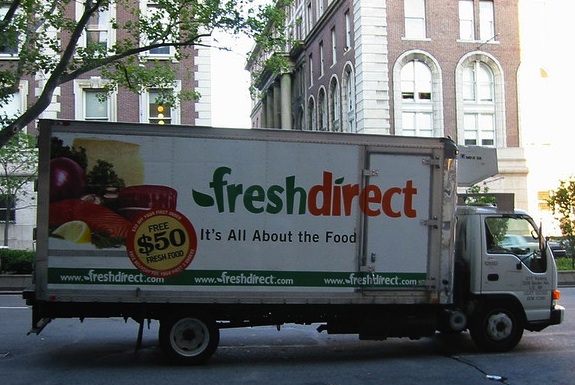To Cut Greenhouse Gas Emissions, Order Your Groceries Online
Ordering groceries online for delivery cuts carbon emissions by half when compared with traveling to the store by car

Photo: WilliamNYC
It took a while for Americans to get comfortable with the idea of shopping for groceries online. The first ventures into online groceries through sites—like Webvan, founded in the 1990s, closed in 2001—flopped. But as consumers bought more books, movies, shoes, clothes, toys and everything else online, companies like New York-centric FreshDirect made web grocery shopping and delivery work.
Services like FreshDirect don’t just cut down on hassle of having to drive to the grocery store. New research shows that they can also be good for the environment. Ordering online cuts carbon emissions on average by half when compared with traveling to the store by car, the researchers found, especially when delivery trucks were filled to capacity.

This is how a delivery truck can save on mileage when compared with personal vehicles driving to and from a store. Photo: Goodchild/Wygonik, UW
In their analysis, the researchers randomly sampled Seattle households. To calculate emissions, they included data such as the type of car families owned, the roadway type, the distance to the grocery store and the speed limit.
They found that grocery delivery trucks produced 20 to 75 percent less CO2 emissions than the corresponding number of personal vehicles would have. If households were targeted based upon established routes rather than individual delivery time requests, that figure jumped to 80 to 90 percent fewer emissions. This finding held true in both Seattle’s dense downtown and in the suburbs.
Nothing beats walking or riding a bike, however, for those shoppers living close enough to the grocery store to enjoy that option.
More from Smithsonian.com:
/https://tf-cmsv2-smithsonianmag-media.s3.amazonaws.com/accounts/headshot/Rachel-Nuwer-240.jpg)
/https://tf-cmsv2-smithsonianmag-media.s3.amazonaws.com/accounts/headshot/Rachel-Nuwer-240.jpg)